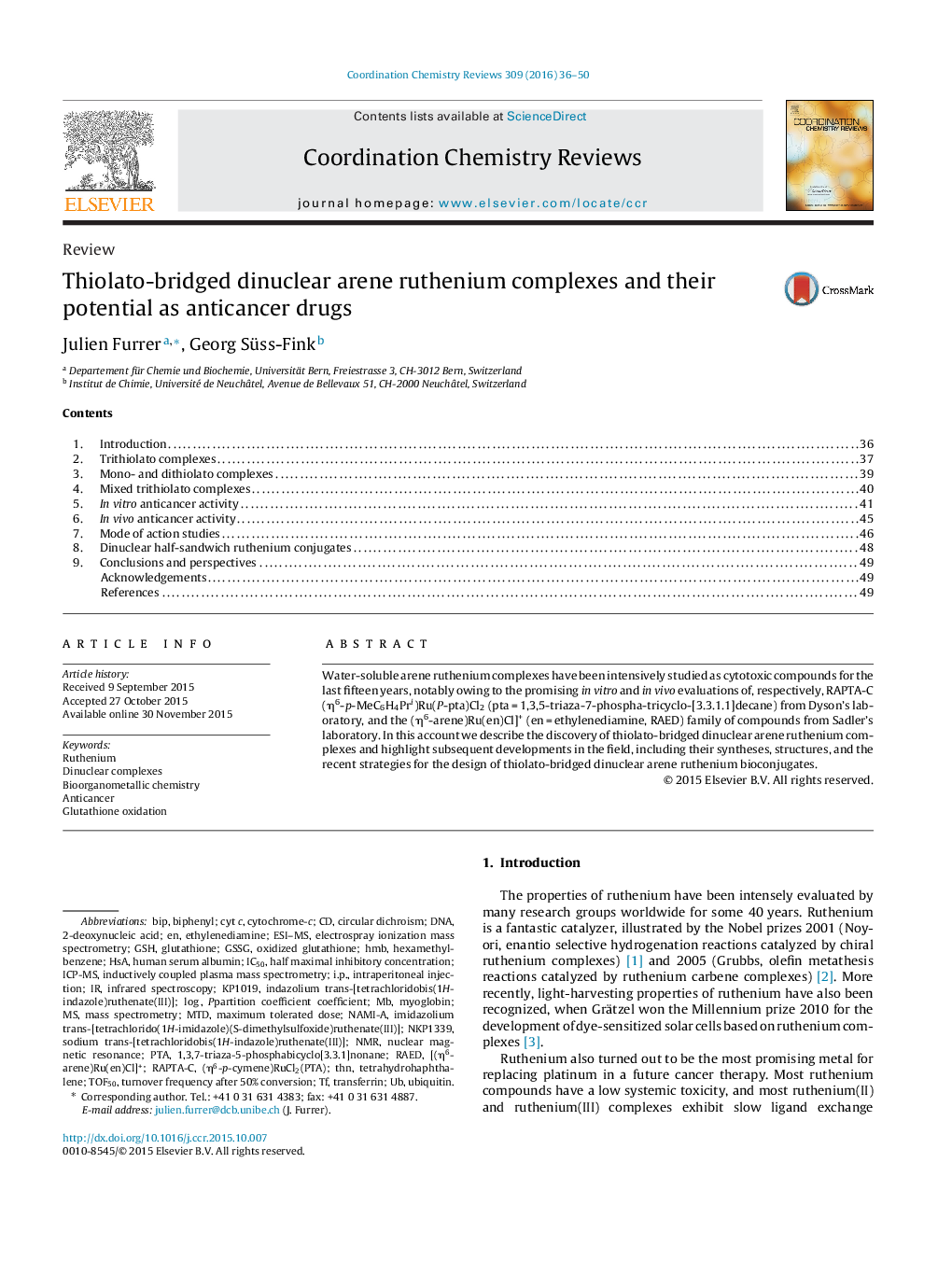| Article ID | Journal | Published Year | Pages | File Type |
|---|---|---|---|---|
| 1299578 | Coordination Chemistry Reviews | 2016 | 15 Pages |
•The discovery and synthesis of thiolato bridged dinuclear arene ruthenium complexes are described and discussed.•The complexes can be obtained as mono-, di-, or trithiolato complexes.•Trithiolato complexes are among the most cytotoxic ruthenium ever reported.•One trithiolato complex, diruthenium-1, significantly prolongs the survival of tumor-bearing mice.•Trithiolato complexes do not hydrolyze and remain inert toward amino acids, proteins, and nucleotides.•Conjugation to various biological active moieties is expected to increase their and cellular uptake and selectivity.
Water-soluble arene ruthenium complexes have been intensively studied as cytotoxic compounds for the last fifteen years, notably owing to the promising in vitro and in vivo evaluations of, respectively, RAPTA-C (η6-p-MeC6H4Pri)Ru(P-pta)Cl2 (pta = 1,3,5-triaza-7-phospha-tricyclo-[3.3.1.1]decane) from Dyson's laboratory, and the (η6-arene)Ru(en)Cl]+ (en = ethylenediamine, RAED) family of compounds from Sadler's laboratory. In this account we describe the discovery of thiolato-bridged dinuclear arene ruthenium complexes and highlight subsequent developments in the field, including their syntheses, structures, and the recent strategies for the design of thiolato-bridged dinuclear arene ruthenium bioconjugates.
Graphical abstractFigure optionsDownload full-size imageDownload high-quality image (116 K)Download as PowerPoint slide
